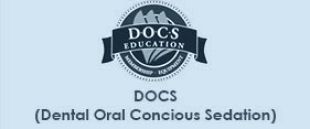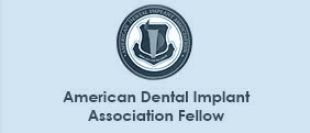






Achieving quality dentistry for life
TMJ Disorders And Therapy
TMJ problems develop for many reasons. You might clench or grind your teeth, which tightens your jaw muscles and stresses your TMJ. Maybe a “bad” bite has misaligned your joint or you may have a joint injury or disease. Whatever the causes, your symptoms may include pain, a clicking or grating noise when you open your mouth, or trouble opening your mouth very wide. In each case, there is no simple prescription for your TMJ. Restoring your jaw’s harmony may include several kinds of treatment to reduce muscle tension, regain a stable bite, or rest and heal your jaw joint.
You can have a TMJ disorder for a long time without realizing it. That is because some of its symptoms, such as worn teeth or headaches, may seem unrelated to your jaw joint. But there is often more to TMJ disorders than just joints. Muscles and your bite – how your teeth come together – can also affect how your TMJ functions, as you can begin to see from the following questions:
Muscles:
- Are you aware of grinding or clenching your teeth? Do you wake up with sore, stiff muscles around your jaw?
- Do you have frequent headaches or neckaches? Does your pain get worse when you clench your teeth?
- Does stress make your clenching and pain worse?
- Are your teeth sensitive, loose, broken, or worn?
Bite:
- Have you had bite problems, such as teeth that do not touch when you bite? Do you have missing teeth?
- Do your teeth meet differently from time to time?
- Do you have difficulty chewing your food?
Joint:
- Does your jaw click, pop, or grate when you open your mouth?
- Do you have trouble opening your mouth, eating, or yawning? Does your jaw sometimes catch or lock closed?
- Have you ever injured your head, neck, or jaw?
- Have you had problems with other joints? Arthritis?
The more times you answered “yes” to the above questions, the more likely it is that you have a TMJ disorder. Understanding TMJ disorders will begin to help you understand how they are treated.
Your TMJ In and Out of Harmony
Your TMJ is a complex joint affected by your jaw muscles, bite, and jaw bones. Each member of this “trio” has a part to play to keep your TMJ in harmony. Around your jaw joint are groups of muscles that contract and relax so you can open and close your mouth, talk, and chew. When they are relaxed, flexible, and balanced they work in harmony with other parts of your jaw. Secondly, your teeth form a bite so you can chew your food. Teeth are attached to your curved upper and lower jaw bones, which meet at your TMJ. The better your teeth line up, the more stable your bite and TMJ will be. Furthermore, your TMJ joins your upper and lower jaw. Like gears of a car, your TMJ has moving parts that allow your lower jaw to move, letting you open and close your mouth for talking, biting, and chewing. Both jaw joints must open and close comfortably and be free from damage due to injury or disease.
Consequently, a problem with any one of these means your TMJ can be out of harmony. Muscle tension can lead to joint stiffness, headaches, and pain around your TMJ. Stress, teeth clenching (bruxism) and poor posture can cause your muscles to tighten up. This tightening pulls your upper and lower jaws closer together, putting more pressure on your TMJ and sometimes wearing down your teeth. Bite problems can change the posture of your jaw. Many kinds of “bad” bites (malocclusion) disrupt the posture of your TMJ. If you have an open bite, your teeth only touch in the back, which can displace your condyle and possibly move your disc out of position. Lastly, joint problems can come from injuries (blow to the jaw or bruxism) or from disease (oftentimes arthritis). An injury may stretch ligaments, allow your disc to slip out of position which can cause a clicking sound or a “locked” jaw, and can even lead to arthritic degeneration. In any TMJ disorder, the individual may have more than one of these problems.
Treatment Options:
There are many TMJ treatment options that improve the harmony and function of your jaw. But, in large part, relief hinges on you. The most important role you can play throughout your treatment program (and your lifetime) is resting your jaw so it can heal and regain stability. Other self-care techniques that may relieve your symptoms are ice, heat, and exercise. At our direction, you may need to practice these techniques until your symptoms subside, if symptoms flare up in the future, or along with other kinds of treatment. Self-care will also help other kinds of treatment be more effective in resolving your TMJ disorder.
Managing daily stress is one of the best ways to help restore harmony between your muscles and TMJ. You can ask us about specific relaxation techniques. Biofeedback teaches you how to relax muscles in spasm. Other techniques, like deep breathing, relax both your mind and body. Getting support helps you cope with the stress and pain that often accompany a TMJ disorder.
A variety of physical therapy techniques, such as jaw exercises, postural training, or mobilization, help you regain the harmony in your jaw and muscles. Physical therapy is often used after surgery or when your disc, ligaments, or other joint tissues are injured. It promotes healing and reduces pain and swelling and may also aid in muscle relaxation and increase your jaw’s range of motion.
Treatment Option – Occlusal Splints
- Purpose: The purpose of this therapy is to influence your lower jaw to function freely and without pain. Many situations cause the malfunction of your lower jaw. Examples are accidents, surgery, developmental defects, peculiar oral habits, many fillings placed over numerous years, naturally occurring malocclusion (poor bite), orthodontics, psychological stress, clenching or bruxism (grinding teeth), and other conditions.
- Rationale: You have received an Occlusal Orthotic Appliance (occlusal appliance, TMJ appliance, nightguard, etc.). This treatment has been used for many years to keep the teeth from contacting during chewing and to allow the lower jaw to return to a comfortable hinge position without interference and guidance from the teeth.
- Wearing the Appliance:
- Temporomandibular Disorders (TMDs): If your condition is temporomandibular disorder, you should wear the appliance at all times including while eating, unless directed otherwise. If you remove the splint to eat, your treatment will not be as effective. Many fillings placed over your mouth over the years or other conditions have caused your teeth to meet in a position your jaws cannot tolerate. The appliance eliminates tooth-to-tooth contact. Your symptoms will gradually disappear while you are wearing the appliance; and we will adjust your natural teeth, bridges, and/or fillings to the new bite. This procedure is called occlusal equilibration. After equilibration, you will wear your appliance only at night. Over a period of time, you will not wear the appliance at all. The described treatment usually requires from a few weeks to several months. See occlusal equilibration [Developer’s note: link to occlusal equilibration further down the page.]
- Bruxism and Clenching: If your condition is bruxism (grinding of teeth) or clenching, you should wear your splint only at night when you cannot control your jaw movements. During the daytime, make sure your splint is placed in water to avoid warping.
- Cleaning the Appliance and Teeth: Food will accumulate around and under the appliance. At least one time each day, brush and floss your teeth very thoroughly. Brush and rinse both the inside and outside of the appliance, and then return it to your mouth. Dental decay can be stimulated if you are not careful about cleanliness of your mouth and appliance. Rinses or gels containing fluoride are useful when placed in your appliance once per day if you have a high dental decay rate.
- When the Appliance Is Out of the Mouth: If the appliance is out of your mouth for any reason, your teeth may not meet in harmony. This situation is to be expected because of muscle relaxation while you are wearing the appliance. Occlusal equilibration will eliminate this improper meeting of the teeth (malocclusion). If the appliance is out of your mouth, place it in a container of water to prevent it from warping. You may desire to soak it occasionally in one of the commercially available denture cleansers. As an alternative, you may soak it in a solution made by adding a few drops of Clorox to a cup of water. Please call the office if you have any questions or difficulty.
From biting and talking to chewing and yawning, your TMJ always comes into play. So when something goes wrong with your jaw joint, it can cause you much discomfort. But with the right diagnosis and treatment, most people do find relief from the pain and other symptoms of a TMJ disorder.
Treatment Option – Energex® Treatment
The Energex® Device was developed to utilize Pulsed Radio Frequency Energy (PRFE) to create low-level electrical stimulation in tissue to relieve joint pain. The Energex® Device generates radio-frequency energy in the 460 kHz range. The energy is pulsed: rapidly cycled on and off at 660 Hz. The device is a compact tabletop unit with an attached applicator used for applying treatment.
Frequently Asked Questions:
What is Energex®?
Energex® is the newest non-invasive, non-drug treatment indicated to treat chronic TMJ arthralgia.
How many office visits are recommended for the course of the therapy?
The recommended protocol for the relief of TMJ pain is six treatment visits over a period of two weeks.
How effective is Energex®?
In a randomized, double-blind, placebo-controlled study, Tufts University School of Dental Medicine researchers found significant relief of TMJ pain. Results were statistically significant as measured by four parameters: reduced pain (VAS scale), increased mouth opening, and increased right and left lateral jaw motion.
Occlusal Equilibration (Occlusal Adjustment)
- Purpose: Teeth and jaws do not occlude (come together) in an acceptable position for many reasons. Some of them are fillings or bridges that have been placed over a period of years, orthodontics, developmental defects, oral surgery, trauma, malocclusion (poor bite), bruxism and clenching.
Occlusal equilibration is the mechanical adjustment of your teeth, dentures, bridges, fillings, or other oral appliances to a position that allows your lower jaw to function in a natural hinge in relation to your upper jaw without improper influence from teeth. - Occlusal Equilibration – Is It Harmful: Your mouth is being equilibrated because some problem exists: pain, abnormal wear, breaking of restorations, or other situations. The problem is usually present because the teeth and/or restorations do not meet in harmony with your lower jaw at the proper position. The teeth and fillings have not “worn in” properly. Occlusal Equilibration “wears” some areas mechanically and allows the teeth to meet harmoniously. It is not harmful, but rather beneficial.
- The Future: A simple occlusal equilibration can be accomplished in a short time. Only slight future changes in your occlusion (bite) occur over a period of time because of small movements of teeth in the jawbones. More complex equilibrations may require several appointments, and the teeth may shift more between appointments. When your symptoms are gone and your occlusion is relatively stable, your equilibration will be finished. Placement of any new restorations in your mouth will change the way the teeth contact, although because of our thorough examination process we are well aware of each patient’s past occlusion problems.
- How your Teeth Feel: After occlusal equilibration, your occlusion (bite) will feel different to you. This is to be expected. You will gradually accept this location as your new chewing position, and it will feel very good.
If you have any questions or problems, please call the office. Thank you.
Bruxism
Bruxism is the technical term for grinding and clenching that abrades teeth and may cause facial pain. People who grind and clench, called bruxers, unintentionally bite down too hard at inappropriate times, such as in their sleep. People who have otherwise healthy teeth and gums can clench so often and so hard over time that their teeth become sensitive and they experience jaw pain and headaches. Forceful biting when not eating may cause the jaw to move out of proper balance. In addition to grinding teeth, bruxers also may bite their fingernails, pencils, and chew the insides of their cheek. People usually are not diagnosed with bruxism until it is too late because so many people do not realize that they have the habit. Others oftentimes mistakenly believe that their teeth must touch at all times. About one in four people suffer from bruxism, which can easily be treated by a dentist.
When a person has bruxism, some of the tips of the teeth look flat. Teeth are worn down so much that the enamel is rubbed off, exposing the inside of the tooth, which is called dentin. When exposed, dentin may become sensitive. Bruxers may experience pain in the temporomandibular joint (TMJ) – the jaw – that may manifest itself as popping and clicking. Women, who are more susceptible to temporomandibular disease (TMD), also have a higher prevalence of bruxism possibly because they are more likely to experience tissue alterations in the jaw resulting from clenching and grinding. Tongue indentations are another sign of clenching.
Stress and certain personality types are at the root of bruxism. For as long as humankind has existed, bruxism has affected people with nervous tension. Anger, pain, and frustration can trigger bruxing. People who are aggressive, competitive and hurried also may be at greater risk for bruxism.
During regular dental visits, we automatically check for the physical signs of bruxism. If the patient or we notice the signs of bruxism, the condition might be observed over several visits to be sure of the problem before recommending and starting therapy. The objective of therapy is to get the bruxer to change behavior by learning how to rest the tongue, teeth and lips properly. When some people become aware of their problem, simply advising them to rest their tongue upward with teeth apart and lips shut may be enough to change their behavior and relieve discomfort. However, we can also make a plastic mouth appliance, such as a night guard that is worn to absorb the force of biting which causes damage and pain and also helps to change patient behavior.











